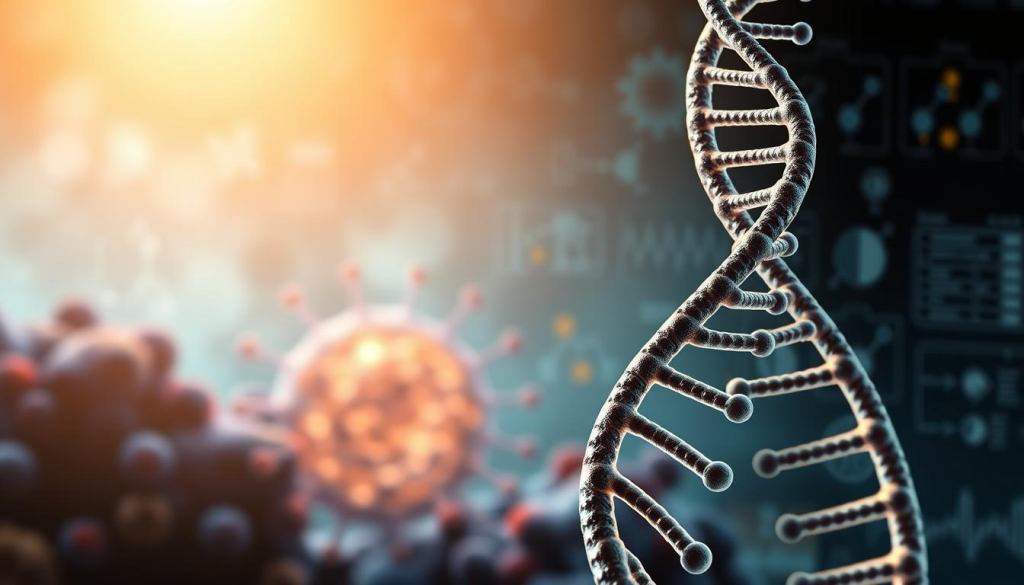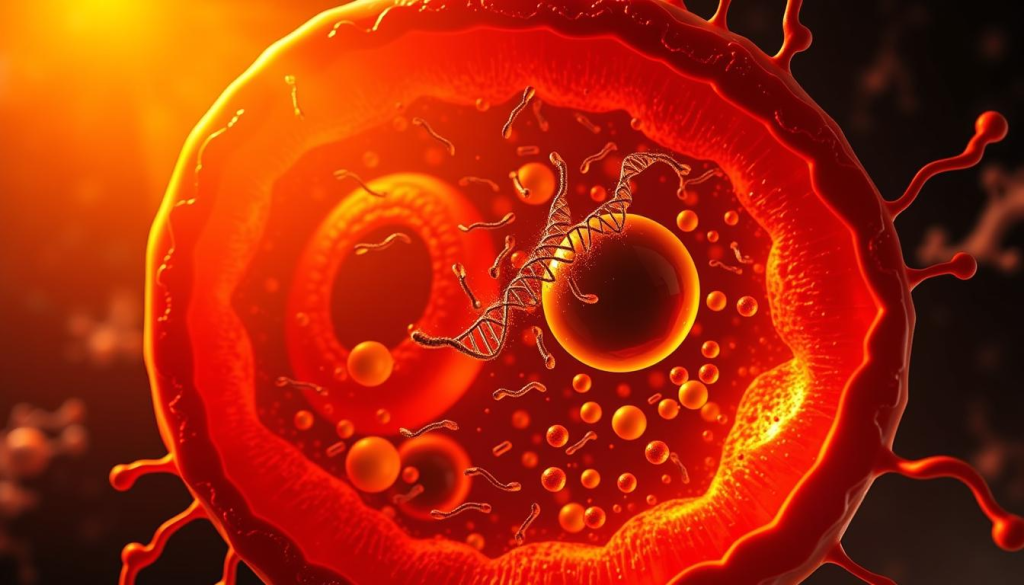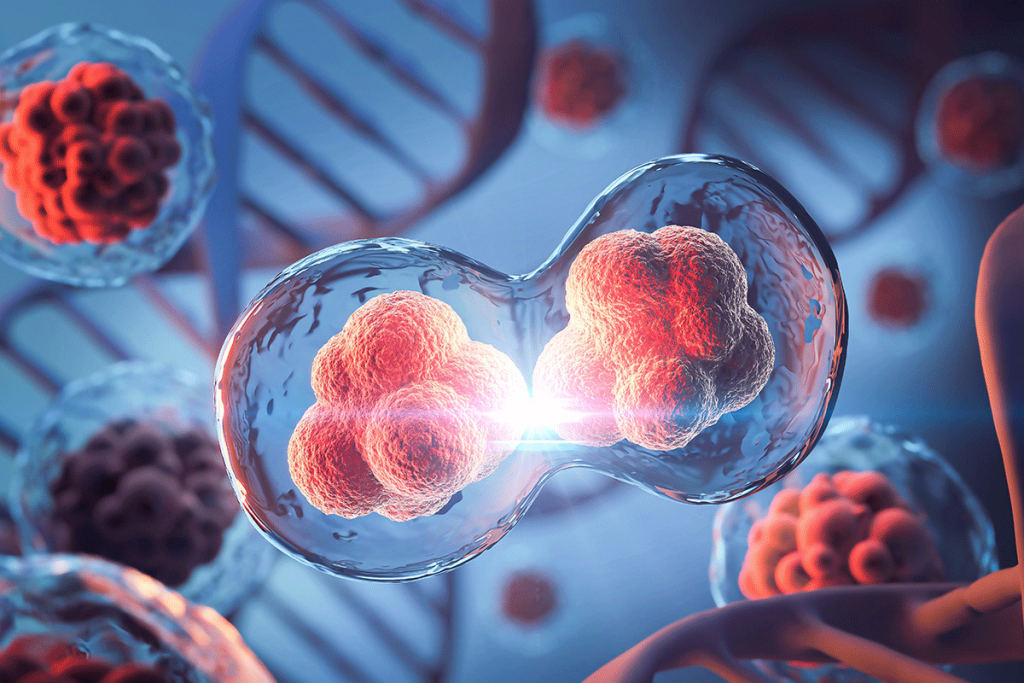Gene therapy is a new hope for people with serious inherited or rare disorders. It’s a medical treatment that changes a patient’s genes to treat or prevent diseases , what is gene therapy
This method is best for those with severe, rare, or life-threatening genetic disorders. These are conditions where there are no good standard treatments.

To find a good candidate, doctors look at genetic diagnosis and the need for new treatments. The expert says gene therapy helps with many conditions. This includes some cancers, spinal muscular atrophy, and rare inherited disorders.
Gene therapy is a new way to treat diseases by changing a patient’s genes. It can fix or replace genes that cause problems. This could lead to a cure or a big improvement in life quality for patients.
Gene therapy changes a patient’s genes to treat or prevent diseases. It can fix bad genes, turn off faulty ones, or add new genes. The main idea is to tackle the genetic cause of diseases, making treatment more precise.
Gene therapy has seen big steps forward. At first, people were unsure about it. But with better genetic engineering and vector technology, it has grown. Early trials and challenges helped lead to today’s more advanced methods.
The journey of gene therapy includes important moments:
Gene therapy works by adding healthy genes to cells. This is done through viral vectors. The aim is to fix the gene problem at its source.
The steps are:

Understanding gene therapy helps doctors find the right patients. It’s a key area in medicine, with ongoing research to make it better and use it more.
Gene therapy is becoming a key treatment for many medical conditions. It’s great for diseases with no good treatments. Genetic diseases make up about 80% of rare human diseases, affecting one in 17 people. Gene therapy is a hopeful solution for these issues.

Rare genetic disorders, like some metabolic and neuromuscular diseases, are prime targets for gene therapy. These conditions often have no good treatments. Gene therapy can change the genes causing these problems.
Gene therapy can also treat life-threatening conditions, like some cancers and severe genetic disorders. It can change or replace genes, giving patients new hope. “Gene therapy is a game-changer for treating life-threatening genetic disorders,” say experts.
“The advent of gene therapy has opened new avenues for the treatment of diseases that were previously considered untreatable.”
Expert in Gene Therapy
Gene therapy is also for diseases without good treatments. It helps conditions where current treatments don’t work well or have bad side effects. By finding the gene that causes the disease, therapists can create targeted treatments.
In summary, gene therapy is best for severe, rare, or life-threatening genetic disorders without good treatments. As research improves, more medical conditions could be treated. This brings hope to patients and healthcare providers.
Gene therapy is a new way to treat many diseases. It’s a big change in treating genetic disorders. It offers a chance for a cure, not just managing symptoms.
It’s used for different diseases. These include some cancers, metabolic issues, neuromuscular problems, and blood disorders.
Gene therapy is showing promise for certain cancers. For example, it’s been approved for treating leukemia and lymphoma.
Gene therapy is helping with metabolic issues like β-Thalassemia. This condition causes anemia and other problems. Gene therapy has greatly improved it.
Gene therapy is being researched for neuromuscular disorders. These affect muscle strength and function. Spinal muscular atrophy has seen gene therapy approval.
Sickle cell disease, a genetic disorder affecting hemoglobin, is treated with gene therapy. Hemophilia B also has gene therapy options, giving patients new hope.

The approval of gene therapies for these conditions is a big step forward. Knowing which diseases are treated helps find who might benefit from it.
Gene therapy has made big strides, with the FDA approving over 21 gene therapies in the US from 2013 to 2025. This time has been key in making gene therapy a real option for treating genetic diseases.
The FDA’s approval timeline for gene therapies has hit major milestones. Luxturna, approved in 2017, was a big win for treating Leber’s congenital amaurosis. Then, Zolgensma in 2019 for spinal muscular atrophy showed gene therapy’s growing reach.

The FDA has approved gene therapies for many genetic conditions. This includes rare genetic disorders and blood disorders like sickle cell disease and β-Thalassemia. These approvals show gene therapy’s ability to tackle various diseases.
Success rates and patient outcomes for FDA-approved gene therapies are encouraging. Many patients have seen big improvements in their lives. For example, those treated with Luxturna have better vision, and those with Zolgensma have better motor skills.
Learning about FDA-approved gene therapies and their results helps find the right candidates. As gene therapy keeps improving, more people will get to benefit from these groundbreaking treatments.
Gene therapy is a very personalized treatment. It’s chosen based on several key factors. These include the disease, the patient’s genes, and how the treatment is given.
A confirmed genetic diagnosis is essential. It shows the disease’s cause and whether gene therapy is right. This means precise genetic tests to find specific mutations.
Assessing the benefit-risk profile is key. It looks at the treatment’s good and bad sides. This helps doctors decide if the benefits outweigh the risks.
Patients must give informed consent. They need to understand the treatment, its outcomes, and risks. This requires clear, simple explanations of complex gene therapy info.
Age and overall health matter a lot. Doctors check these to make sure patients can safely get the treatment. They want to make sure it will help.
By looking at these criteria, doctors can find the right people for gene therapy. This makes sure the treatment is used well and safely.
Gene therapy has made big strides, but it faces many hurdles. The treatment’s complexity and socio-economic factors make it hard for patients to get it. These barriers stop many from trying this new treatment.
Gene therapy is pricey, making it hard for many to afford. Insurance coverage varies, and some patients face big costs. Financial assistance programs help, but they’re not everywhere.
Patients need lots of support from family and caregivers during gene therapy. This support is key to managing the treatment and its side effects. Social support networks are essential for success.
Good communication between doctors and patients is vital for gene therapy. But sometimes, there are misunderstandings. Improving patient education and provider-patient communication can fix these issues.
Gene therapy access is limited by where you live. Some areas have fewer treatment centers. Also, not all places have the right doctors and facilities.
Overcoming these barriers is key to making gene therapy more accessible. By understanding gene therapy, we can work towards making it available to more people.
Gene therapy is now more available, but only a small part of those who could benefit get it. This treatment is a big step forward in medicine, giving hope to those with genetic diseases. But there’s a big gap between those who could get it and those who actually do.
Doctors’ lack of knowledge is a big reason for this gap. Doctors need to know about the latest in gene therapy and who can get it. Teaching them more and training them can help close this gap.
Finding patients who could benefit from gene therapy is hard. Some patients don’t know about it or haven’t been diagnosed correctly. Better diagnosis and teaching patients more can help find those who need it.
There are also big problems in the healthcare system. Things like insurance and access to care make it hard for patients to get gene therapy. We need to fix these problems with policy changes and more healthcare services.
Fixing the gap in gene therapy referrals is a big job. We need to work on doctors’ knowledge, finding patients, and fixing healthcare problems. This way, more people who could benefit from gene therapy will actually get it.
The world of gene therapy is changing fast, thanks to new ideas that make it easier for people to get help. Gene therapy, a medical treatment that uses genes to prevent or treat diseases, has grown a lot. It’s important to understand it to see its full promise.
New ways to get treatments approved faster have helped a lot. This means patients can get treatments that could save their lives sooner. The U.S. FDA has led the way in making these changes.
Trials are now designed with patients in mind, making them easier and less stressful. This approach focuses on what patients need, making trials more efficient.
New technologies, like better ways to deliver genes, have made gene therapy safer and more effective. These breakthroughs have opened up new possibilities for gene therapy.
Special care centers and support services are key to making gene therapy more accessible. They offer full care and support to those receiving gene therapy.
In summary, new ideas like faster approval paths, trials designed for patients, tech advancements, and support systems are making gene therapy more available. As gene therapy keeps improving, it will likely become a key treatment for many diseases.
Gene therapy is a promising treatment for genetic disorders and diseases. It’s important to know who can get it and its benefits and risks. This knowledge helps in making informed decisions.
Gene therapy adds the right gene to cells to fix faulty ones. It delivers a healthy gene to cells, helping them work right again. This can ease symptoms of diseases. Knowing how it works helps doctors find the right patients for it.
The future of gene therapy looks good. Discoveries and improvements are making it more available. As research grows, gene therapy will likely play a big role in treating many conditions.
Gene therapy is a medical treatment that changes a patient’s genes to treat or prevent diseases. It can replace bad genes with good ones, stop bad genes from working, or add new genes to fight diseases.
Gene therapy aims to fix genetic disorders at their source. It delivers genetic material to cells to change or control a patient’s genes.
Gene therapy works best for rare genetic disorders and serious conditions without good treatments. Examples include metabolic issues, neuromuscular diseases, and blood disorders.
Gene therapy is approved for treating various diseases. This includes some cancers, metabolic issues, neuromuscular disorders, and blood disorders. Examples include Leber’s congenital amaurosis, β-Thalassemia, sickle cell disease, and hemophilia B.
Patients need a confirmed genetic diagnosis and a clear benefit-risk profile to qualify. They must also be able to give informed consent. Age and health status are also key factors.
Access barriers include insurance and financial issues, social support needs, communication gaps, and location and institutional limits.
The gap is due to a lack of doctors’ knowledge, challenges in identifying patients, and healthcare system barriers.
Gene therapy is becoming more accessible through new regulatory paths, patient-focused trials, tech advancements, and support systems.
Gene therapy changes genetic material by adding healthy genes to cells. It replaces bad genes, stops malfunctioning ones, or adds new genes to fight diseases.
Gene therapy has been evolving for years. The US FDA approved many gene therapies from 2013 to 2025, showing big progress in the field.
Subscribe to our e-newsletter to stay informed about the latest innovations in the world of health and exclusive offers!
WhatsApp us